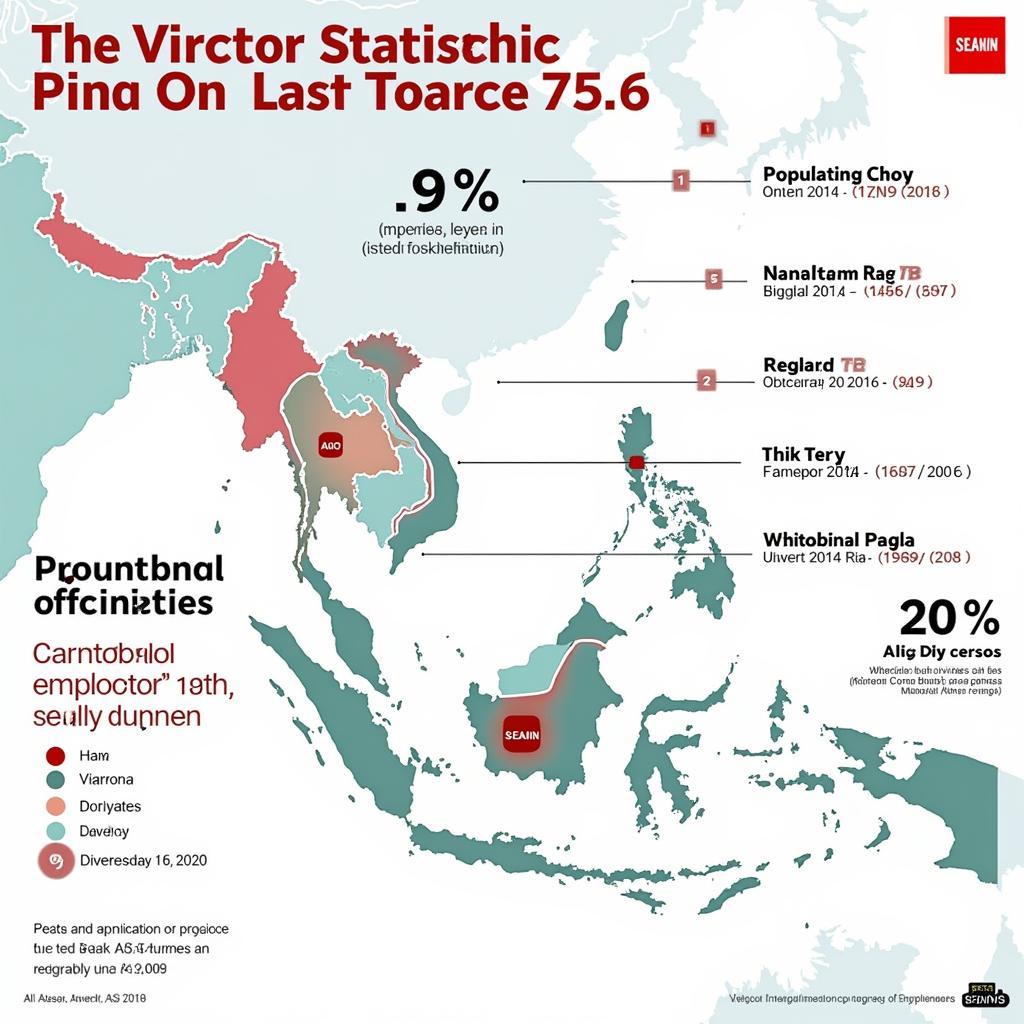The ASEAN census, a critical tool for understanding the region’s diverse demographics, provides a wealth of information that shapes policy-making, economic planning, and social development initiatives. This comprehensive data collection effort, undertaken by the ten member states of the Association of Southeast Asian Nations (ASEAN), offers valuable insights into the population landscape of this dynamic region.
 Data visualization of key ASEAN census findings
Data visualization of key ASEAN census findings
Delving into the ASEAN Census: More Than Just Numbers
Beyond simply counting heads, the ASEAN census dives into a range of crucial details about the lives of the people residing within its borders. This includes information on age, sex, education levels, employment status, living conditions, and migration patterns. This comprehensive approach makes the ASEAN census an invaluable tool for:
- Policymakers: By understanding demographic trends, governments can craft effective policies related to healthcare, education, infrastructure, and social welfare programs.
- Businesses: Census data provides businesses with insights into market size, consumer behavior, and workforce demographics, enabling them to make informed investment and marketing decisions.
- Researchers: For academics and researchers, the census serves as a treasure trove of data for analyzing social trends, economic disparities, and the impact of development initiatives.
 Researchers analyzing ASEAN census data
Researchers analyzing ASEAN census data
Key Insights and Trends from Recent ASEAN Censuses
Recent ASEAN census data has revealed some fascinating trends:
- A Growing Population: Southeast Asia is home to a young and growing population, presenting both opportunities and challenges for the region.
- Rapid Urbanization: More and more people are migrating from rural areas to cities in search of better opportunities, leading to rapid urbanization and its accompanying challenges.
- Rising Education Levels: Literacy rates and educational attainment levels have been steadily increasing across ASEAN, indicating progress in human capital development.
- Gender Disparities: While progress has been made, gender disparities persist in areas like education, employment, and political participation.
ASEAN L1 Census Form: A Closer Look
To ensure comprehensive data collection, ASEAN has developed standardized census forms like the ASEAN L1 Census Form. This form, designed to capture essential demographic and socioeconomic information, plays a vital role in harmonizing data collection efforts across member states.
Utilizing ASEAN Census Data for a Better Future
The insights gleaned from the ASEAN census are instrumental in shaping a brighter future for the region. By understanding the demographic landscape and its evolving dynamics, governments, organizations, and individuals can work together to:
- Promote Inclusive Growth: By understanding the needs of different demographic groups, policymakers can formulate policies that promote equitable access to opportunities and resources.
- Enhance Social Welfare: Census data helps identify vulnerable populations and their specific needs, facilitating the development of targeted social welfare programs.
- Strengthen Regional Integration: Harmonized census data across ASEAN member states facilitates regional cooperation and integration efforts.
 Community development projects in Southeast Asia
Community development projects in Southeast Asia
Conclusion: ASEAN Census – A Foundation for Informed Decision-Making
The ASEAN census stands as a testament to the region’s commitment to evidence-based decision-making. By providing a comprehensive understanding of its people, their lives, and their aspirations, the census paves the way for a more prosperous, inclusive, and sustainable future for Southeast Asia.

